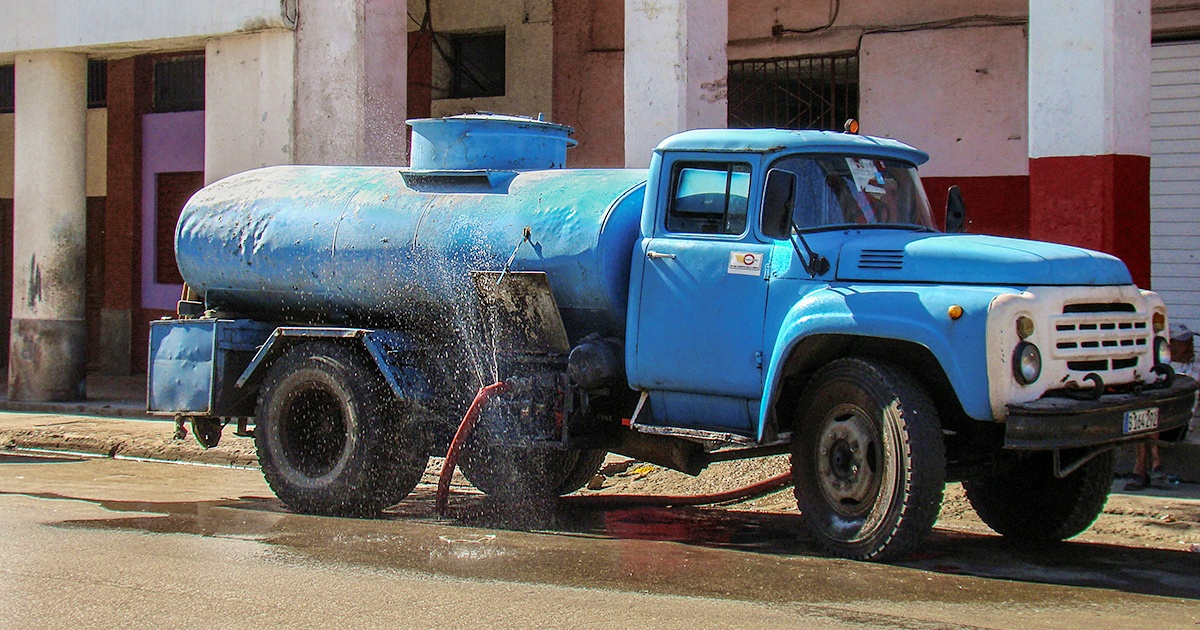
This Mondayabout 200 thousand people lacked water in Havana and new service cuts are expected in the coming days, as announcedHavana Tribune.
The official newspaper stated that in the water supply crisisIt has been mainly influenced by the high number of breakdowns in pumping equipment caused by electric shocks., to which is added to a lesser extent a decrease in reservoirs surface of the province in the first 19 days of this month.
The aforementioned source assures that only in June the electrical storms in the capital have caused158 breakdowns in the water supply system, 74 of them in the last seven days.
Aguas de La Habana has even shared on Facebook images of the breakdowns in the electrical system of the pumping equipment that have affected the water supply in the capital in recent days.
Measures to stabilize water supply in Havana
The recovery of eight pumping equipment, the establishment of community water tanks where possible, the monitoring and maintenance of infrastructure to try to reduce the damage caused by lightning and the use of wells were some of the measures announced this Monday to face the effects of water supply in the country's capital during July.
Added to this is the arrival in July to Cuba of a dozen pumping machines that will allow the supply system to be stabilized.
Engineer Leonel Díaz Hernández, general director of the Aguas de La Habana Company (EAH), explained that although the province is one of those affected by the drought, the recent effects are due to damage to the infrastructure.
The municipalities most affected in recent weeks have been Playa, Marianao and La Lisa, territories that are supplied by the Ariguanabo system, whose pumping infrastructure has been the most damaged. by electric shocks. The residents of these municipalities receive the service on alternate days for eight hours, on average, but in the last one the hours have been reduced due to the increase in breakdowns.
In the center of the city, the most affected have been the residents of Old Havana and Centro Habana, although there have also been interruptions in areas of Plaza de la Revolución, Cerro and Diez de Octubre.
To a lesser extent, some communities of Boyeros and Arroyo Naranjo have been affected, mainly due to low pressures from the Cuenca Sur supply source.
Havana currently concentrates the largest number of people affected by the drought, with 48,239 inhabitants, of which 13,781 have had the delivery cycle extended, another 30,548 have had their hours extended, and 3,910 are receiving only through pipes.
Paradoxically, Tribuna de La Habana announces that “western Cuba has benefited very little or nothing from the waters of recent days,” and hopes that the rains between now and November will contribute to alleviating the crisis.
Meanwhile, a note published by Aguas de La Habana announced that this Thursday, June 29, there will be a lack of water between 6 am and 6 pm in some areas and districts of the municipalities of Plaza de la Revolución, Cerro, Centro Habana, La Habana Vieja, Diez de Octubre and Boyeros “due to maintenance work and repairs on the conductors and power lines that feed the Cuenca Sur supply source.
As is usual in these cases, Aguas de La Habana apologized to users for the inconvenience caused and indicated that once the maintenance and repair work is completed, the water service will be gradually restored at normal times.
So far this month, there are dozens of water cuts announced by the Aguas de la Habana Company due to maintenance work and repairs on the conductors and power lines that feed the capital's supply sources.
Water outages due to maintenance work or breakdowns are frequent in the capital, where river networks are seriously deteriorated due to so many years of overexploitation and lack of adequate maintenance.
What do you think?
SEE COMMENTS (1)Filed in: